Replace the engine sump gasket if oil leaks are detected.
If tightening the bolts does not eliminate the oil leak, then the gasket has become deformed or dried out.
Prepare the vehicle for work.
Place the vehicle on an inspection pit or lift.
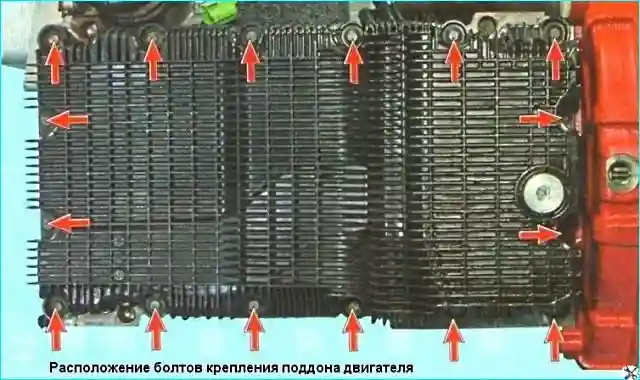
Remove the powertrain protection.
Drain the oil from the engine.
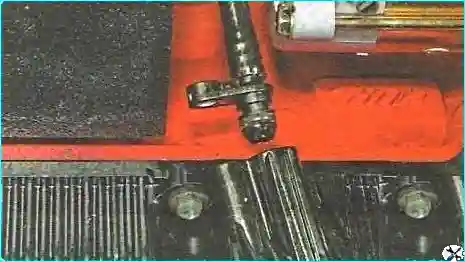
Removing the oil level indicator guide
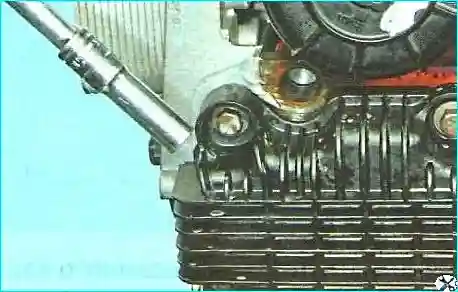
Using a 10 mm socket, unscrew the sixteen bolts securing the crankcase to the cylinder block
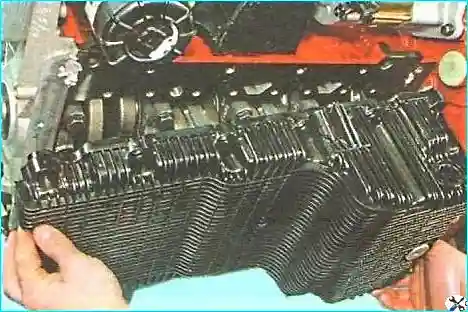
Removing the crankcase
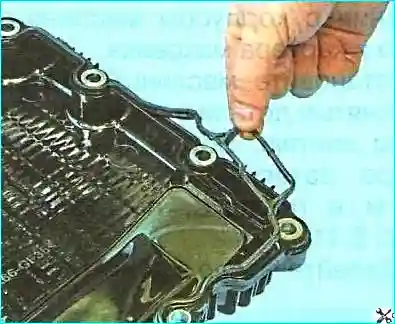
Removing the sealing gasket from the crankcase grooves
Cleaning the grooves of the oil pan from the remains of the old gasket.
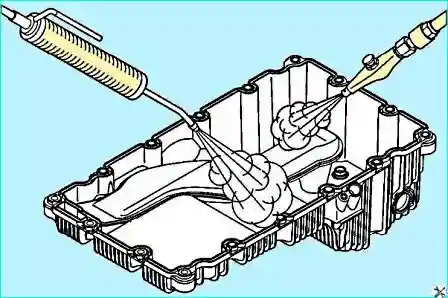
Clean the oil pan and dry it with air.
Check the oil pan support flange, the intake pipe for cracks and other damage.
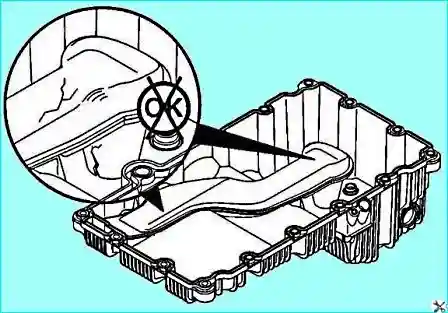
The mesh filter in the oil sump is not removable.
Make sure there is no debris trapped filter mesh, reverse flushing of the intake tube.
Check the oil drain plug sealing rings.
Install a new gasket.
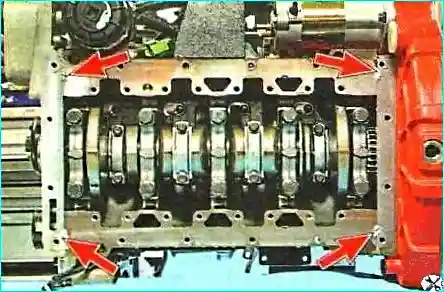
Apply a thin layer of sealant to the mating surface of the cylinder block where it mates with the oil pump housing and flywheel housing (Fig. 8).
Install the oil sump and all removed parts in the reverse order.
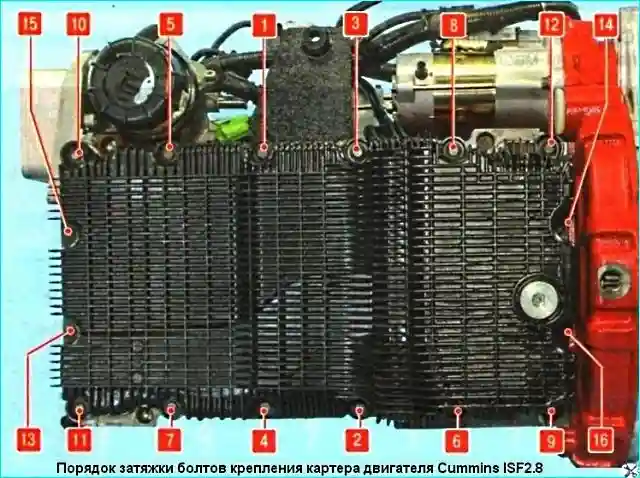
Tighten the crankcase mounting bolts to 24 Nm, in the order shown in the figure.
Fill the engine with oil.
Replacing the oil level indicator guide seal
The oil level indicator guide is sealed with a rubber ring. If a leak appears at the sealing point, replace this ring.
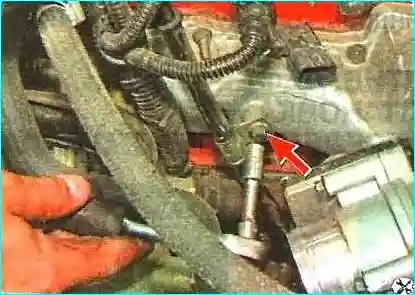
Unscrew the bolt securing the oil level indicator guide holder and disconnect the guide from the intake pipe.
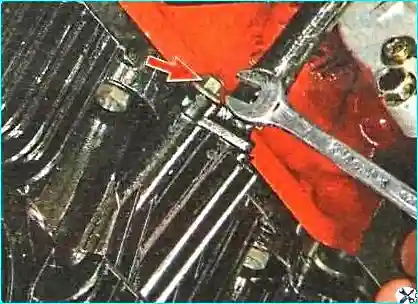
Unscrew the bolt securing the holder to the oil pan, remove the pipe from the crankcase hole and remove it from the car.
Remove the sealing ring from the guide.
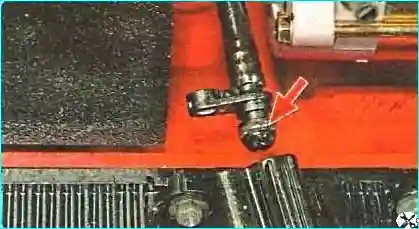
Before installing, lubricate the new ring with engine oil.
Install the guide on the oil pan in the reverse order.





